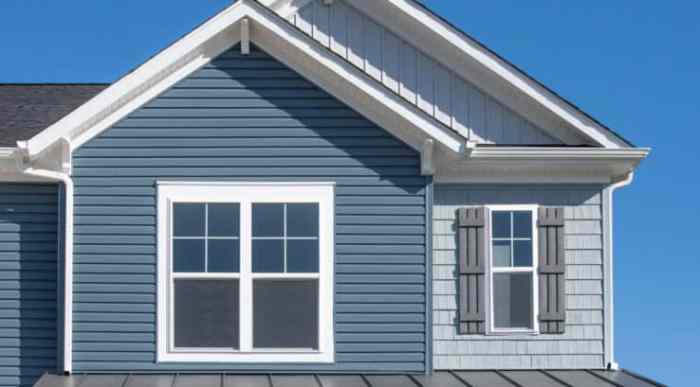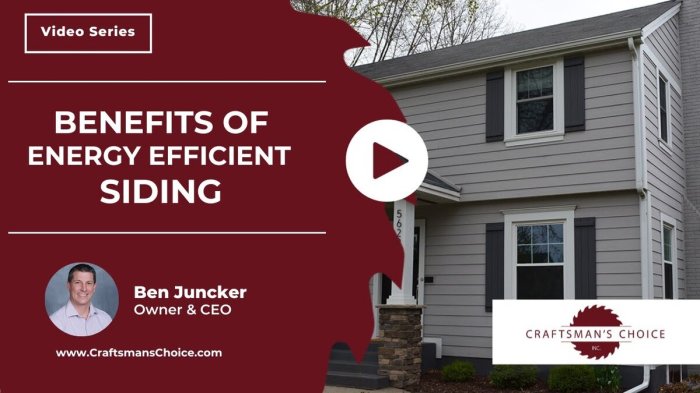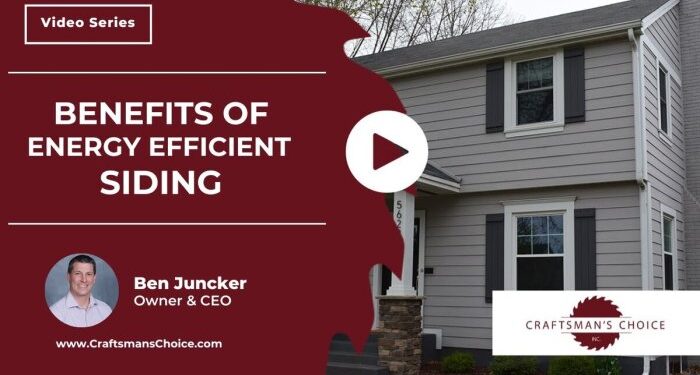When it comes to enhancing home energy efficiency, the choice of siding materials plays a crucial role. This guide dives into the world of siding materials that not only protect your home but also help in conserving energy. From insulation techniques to sustainable options, explore how these materials can make a significant difference in your household's energy consumption.
Types of Siding Materials

When it comes to boosting home energy efficiency, the choice of siding materials plays a crucial role. Different materials offer varying levels of insulation and durability, impacting the overall energy performance of a house.
Vinyl Siding
- Vinyl siding is a popular choice due to its affordability and low maintenance.
- It offers decent insulation properties, helping to regulate indoor temperatures and reduce energy consumption.
- Although it is not the most energy-efficient material, it provides a good balance between cost and insulation.
- Many modern homes use vinyl siding paired with additional insulation to enhance energy efficiency.
Fiber Cement Siding
- Fiber cement siding is known for its durability and resistance to harsh weather conditions.
- It offers excellent insulation properties, helping to keep homes cool in summer and warm in winter.
- While it may have a higher upfront cost, the long-term energy savings make it a cost-effective choice.
- Many eco-friendly homes opt for fiber cement siding due to its energy efficiency and sustainability.
Wood Siding
- Wood siding provides a natural and classic look to homes, enhancing their aesthetic appeal.
- It offers moderate insulation properties, contributing to energy efficiency to a certain extent.
- While it requires more maintenance compared to other materials, wood siding can be treated to improve its energy performance.
- Many traditional and rustic homes feature wood siding to create a cozy and energy-efficient living space.
Insulation and Energy Efficiency
Insulation plays a crucial role in improving energy efficiency in homes by creating a barrier that helps regulate temperature and reduce heat transfer. When it comes to siding materials, the choice can significantly impact the effectiveness of insulation in a home.
Impact of Siding Material Choice on Insulation
The R-value of siding materials indicates their insulation capabilities, with higher values representing better insulation. For example, materials like vinyl siding typically have a lower R-value compared to options like fiber cement or insulated vinyl siding. Choosing siding materials with higher R-values can help improve energy efficiency by reducing heat loss in winter and heat gain in summer.
Innovative Insulation Techniques
Innovative techniques such as installing a continuous insulation layer under the siding or using insulated siding panels can further enhance energy efficiency. These methods help minimize thermal bridging and improve the overall insulation performance of the home, resulting in lower energy bills and increased comfort for residents.
Installation Practices for Energy Efficiency
Proper installation of siding materials is crucial in maximizing energy efficiency in homes. By following best practices and ensuring correct sealing and weatherproofing, homeowners can significantly reduce energy consumption and increase comfort levels indoors.
Importance of Proper Sealing and Weatherproofing
- Sealing gaps and cracks in the exterior walls before installing siding materials helps prevent air leakage, which can lead to energy loss.
- Proper weatherproofing with moisture barriers and flashing around windows and doors can prevent water infiltration, reducing the risk of mold and rot while maintaining energy efficiency.
- Using high-quality caulking and sealants during installation can enhance the overall performance of the siding and insulation, improving the home's energy efficiency.
Tips for Minimizing Thermal Bridging
- Install a continuous layer of insulation under the siding to reduce thermal bridging, where heat escapes through the framing of the home.
- Choose siding materials with high R-values to provide better thermal resistance and minimize heat transfer through the walls.
- Avoid metal fasteners that can create thermal bridges between the siding and the wall, opting for insulated mounting systems instead.
Examples of Improved Energy Efficiency
- Home A underwent a siding renovation with proper sealing and insulation, resulting in a 20% reduction in heating and cooling costs.
- Home B implemented advanced installation techniques, including thermal bridging solutions, and saw a significant improvement in indoor comfort levels and energy savings.
Sustainable Siding Options
When it comes to sustainable siding options, choosing environmentally friendly materials can significantly contribute to energy efficiency in your home. These options not only help reduce your carbon footprint but also provide long-term benefits for both the environment and your wallet.
Benefits of Sustainable Siding
- Increased Energy Efficiency: Sustainable siding materials are designed to enhance insulation, reducing the need for heating and cooling, ultimately lowering energy consumption.
- Durability and Longevity: Many sustainable siding options are known for their durability, requiring less maintenance over time and ensuring a longer lifespan.
- Recyclable and Renewable: Some sustainable siding materials can be recycled or are made from renewable resources, further reducing environmental impact.
Examples of Sustainable Siding Options
- Bamboo Siding: Bamboo is a rapidly renewable resource that can be harvested sustainably. It offers excellent insulation properties and a unique aesthetic appeal.
- Recycled Metal Siding: Made from recycled materials, metal siding is durable, fire-resistant, and can be recycled again at the end of its lifespan.
- Cork Siding: Cork is a natural insulator, providing excellent thermal performance. It is harvested from the bark of cork oak trees without harming the tree itself.
Ultimate Conclusion

In conclusion, the selection of the right siding materials can transform your home into an energy-efficient oasis. By understanding the properties and installation practices associated with these materials, you can create a more sustainable and cost-effective living space. Make the switch to siding materials that not only enhance the aesthetics of your home but also boost its energy efficiency.
FAQ Guide
What are some examples of sustainable siding options?
Examples of sustainable siding options include fiber cement, engineered wood, and recycled metal. These materials not only contribute to energy efficiency but also have minimal environmental impact.
How does insulation impact energy efficiency when it comes to siding materials?
Insulation plays a vital role in improving energy efficiency by reducing heat loss or gain through the walls. The choice of siding material can affect how effectively insulation works in maintaining a comfortable indoor temperature.
What are some best practices for installing siding materials to maximize energy efficiency?
Best practices include proper sealing, weatherproofing, and minimizing thermal bridging during installation. These practices ensure that the siding materials work efficiently in conserving energy.



